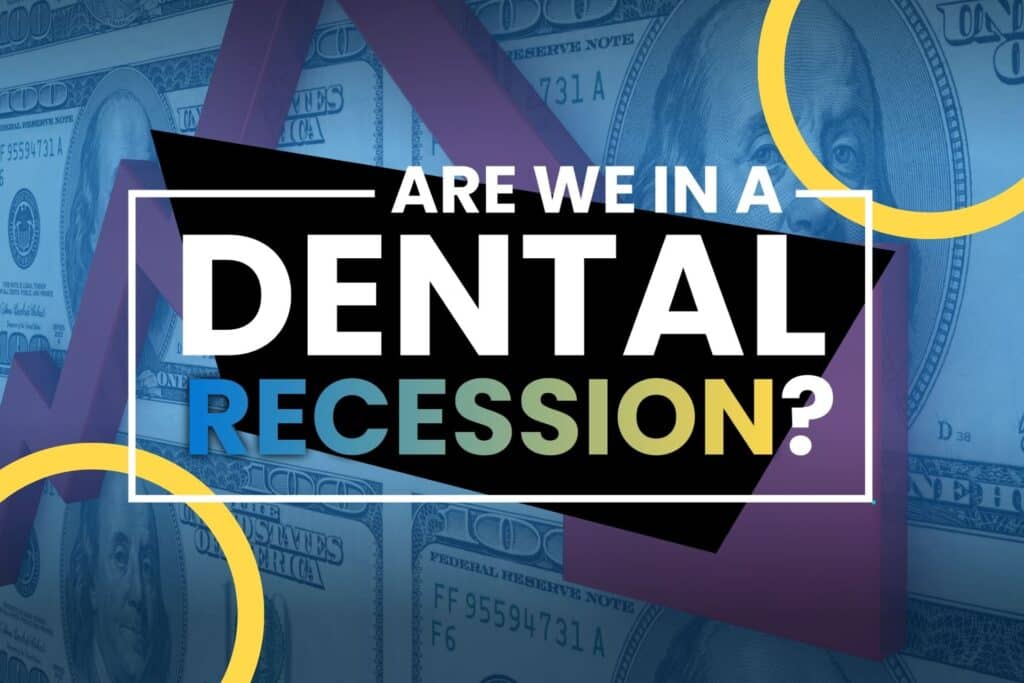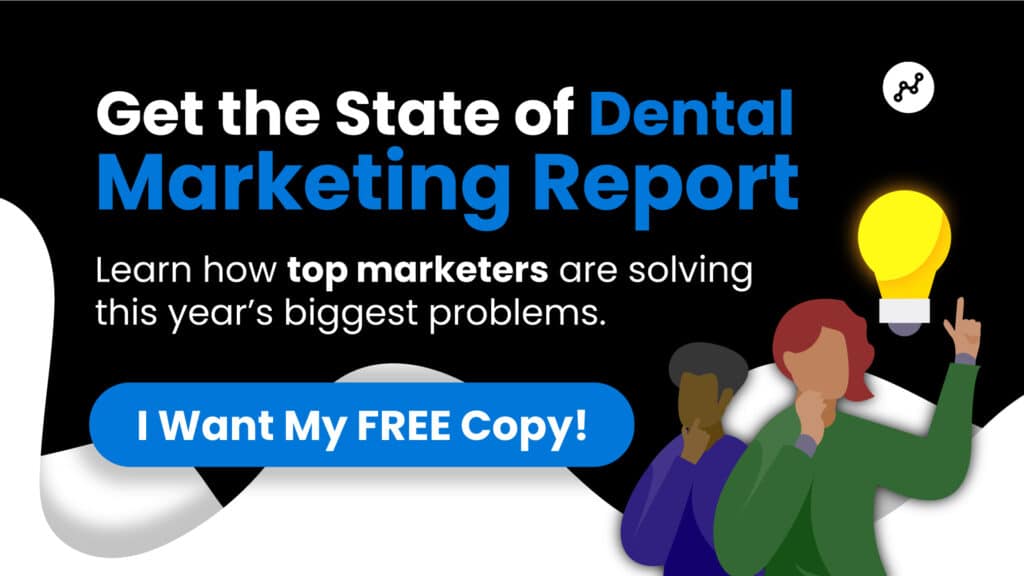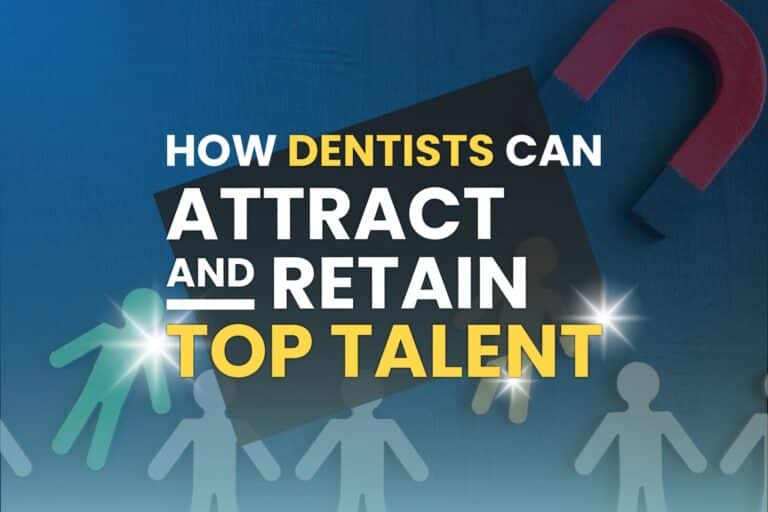I talk to a lot of folks in dental. And recently, I’ve heard rumblings that a nameless, major group in our industry (we’re talking hundreds of locations) is struggling to pay its doctors and will be headed for bankruptcy.
Now, we’ll see if this rumor proves true (and I don’t want to make too big of a deal about a single anecdote). But I mention it to illustrate a larger point.
Right now, dentists and DSOs large and small are facing an interconnected series of challenges that some are calling a dental recession. And to move forward, the dental community is going to have to adapt.
Let’s walk through some of the specific problems — and my take on solutions — and then talk about whether we should feel pessimistic or hopeful about where our industry is headed.
Why practices are struggling right now
These days, growth-minded practice leaders have a lot on their plates.
The cost of supplies is up. So is the cost of labor. And to top it all off, patients are accepting less treatment — some estimates project that up to 50 percent of patients are holding off on getting work done — which makes it tough for practices to keep up with the (well-deserved) wage gains that hygienists and associates earned during the pandemic.
Oh, and same-day cancellations and no-shows are higher than ever.
Those are just the practice-level challenges, too. Large dental groups and DSOs are facing their own set of issues — chief among them that access to capital has increasingly dried up.
During the last half-decade or so, banks and private equity investors have been hungry to put money into dental. Understandably, DSOs have been happy to accept — to the point that many private equity-backed groups now find themselves leveraged 10 or even 20 to 1.
In many ways, this has been a good thing. I’m generally optimistic about DSOs, especially when they can give doctors greater flexibility and support. And I’m also hopeful that the influx of cash into our industry will help make new treatments and better care more accessible.
However, rising interest rates over the past year have left those same previously eager lenders suddenly wary. This means that the cheap capital some DSOs have counted on to finance their growth has dried up — just as their practices run smack into the new patient trouble I’ve described above and leaving many executives feeling caught between a rock and a hard place.
What practice leaders can do to adapt
I won’t pretend that I’ve got all the answers here. But I can say that just as a rising tide lifts all boats, creating consistent new patient growth can make most any practice’s financial circumstances feel a lot brighter.
Here are a few specific, proven tactics you can use to get more patients through your doors.
- Use geo-mapping to target your ad campaign so that you reach only the people who need the specific treatments you’re offering — and have the resources to pay for them. We do this automatically for all of our clients, but you can also work with a third-party mapping service to get great results.
- Embrace hygiene patients — even if you’d prefer folks seeking higher-dollar treatment. After all, the most expensive thing in a dental office is an empty chair, so even cheap treatment is better than no treatment at all. Plus, once you have a relationship with a new patient, you’ll have an easier time talking with them about other ways you can help.
- Nail phone conversion. Short version: if you answer all your new patient phone calls and convert those calls into scheduled appointments at a high rate (say 80+ percent), your per-patient marketing costs will drop dramatically. Doing this means either expanding your front desk team or working with an answering service to make sure every call gets answered, plus partnering with coaches to boost your conversion rates.
- Overbook your appointments. This is a big one: if you’re struggling with same-day cancellations and no-shows, don’t be afraid to take a page from the airline industry and start double booking certain appointments — specifically, those in which you sent a confirmation text or call and never got a reply. The vast majority of the time, the first patient won’t show up, but the second patient (happy to get an appointment on short notice) will.
- Use geo-mapping to target your ad campaign so that you reach only the people who need the specific treatments you’re offering — and have the resources to pay for them. We do this automatically for all of our clients, but you can also work with a third-party mapping service to get great results.
Where does all of this leave dental moving forward?
Overall, I’m bullish on the future of our industry. The dental business remains as fundamentally sound as ever — even disruptions from major new tech like AI can’t change the basic fact that people need people to take care of their teeth.
But what practice owners should accept is that the good old days are over. Fewer dentists will simply graduate from school, take out a bank loan, open a practice, and cruise along comfortably for the next 40 years.
Even though some of the larger groups and DSOs may be navigating choppy financial waters right now, consolidation is still the biggest trend in dental. More than one in five young dentists now work for a DSO, a number that will likely only increase over the next decade.
Meanwhile, many older dentists sell their practices to a DSO when they retire.
This means that for better or worse, dental is moving from a mom-and-pop type business model to a more professional, corporate one. Everyone from group practice executives to doctor owners is going to have to adjust — especially when it comes to competing for new patients.
Here, succeeding in our new climate will mean adopting a more sophisticated approach grounded in analytics, measurable results, and growth tactics like the ones I’ve shared above. Making more of an effort to integrate marketing and operations is also a huge winner.
TL;DR: We can and will get through the challenges we’re facing now. But practice leaders who take this sort-of dental recession as an opportunity to get smarter will come out ahead. And some who don’t will find themselves facing tougher choices down the road.






